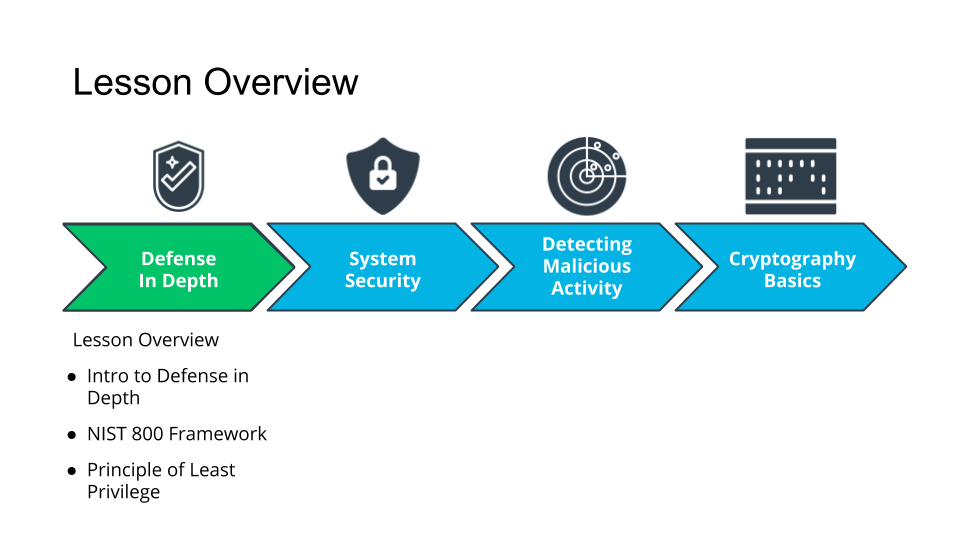17. Lesson Conclusion
Lesson Conclusion Heading
Lesson Conclusion
ND545 C02 L01 A15 Lesson Conclusion V3
Lesson Conclusion Text
Key Takeaways:
Defense in Depth is using complementary layers of defenses to protect your organization.
NIST provides frameworks and standards to assist in developing your security program.
Principle of Least Privilege is the idea that any user, program, or process should have only the bare minimum privileges necessary to perform its function. You will see references to this throughout the course.
3-Component Model of Security Prevention, Detection and Response. Every topic, when introduced, will reference where it falls in this model.
*As a side note, this course is a foundational course that is meant to help build the knowledge to become job-ready, but you will likely need additional training and/or coursework in order to obtain a job in this field. These foundations will set you up for success going forward and are vital to your success in this field. *

Lesson Key Terms
| KeyTerm | Definition |
|---|---|
| Framework | A set of agreed-upon policies, procedures, and processes that define how information is managed. |
| NIST CSF | The Framework is voluntary guidance, based on existing standards, guidelines, and practices for organizations to better manage and reduce cybersecurity risk. |
| NIST-800 | NIST’s 800 series presents information of interest to the computer security community. The series comprises guidelines, recommendations, and technical specifications. |
| Principle of Least Privilege | is the idea that at any user, program, or process should have only the bare minimum privileges necessary to perform its function. |